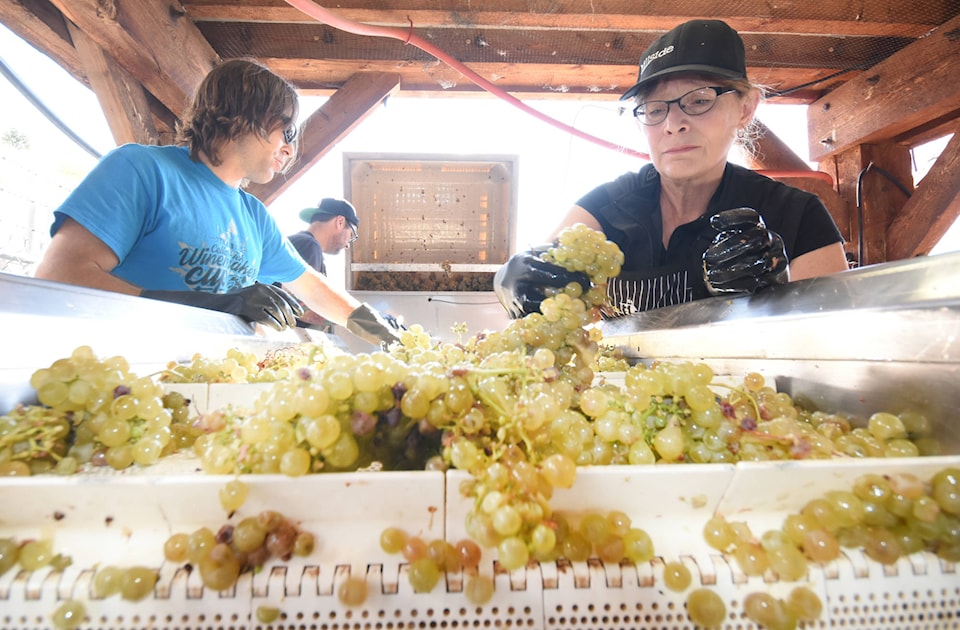Guarded optimism surrounds this year’s grape harvest due to an especially smoky Okanagan summer.
“We have had some of our grapes tested and so far everything seems fine,” said Andy Gebert, co-proprietor of St Hubertus and Oak Bay Estate Winery with his brother Leo.
The Kelowna winery actually started the year conducting a smoke taint test experiment, tenting off a section of grapes and infecting their direct environment with controlled smoke releases to test the impact.
“The irony is we started with that experiment and then the smoke turned up throughout the summer from the wildfires,” he said.
RELATED: A BOUNTY OF FALL TASTES
“But the difference is none were close to us, as compared to say 2003 with the Okanagan Mountain fire where the smoke was hanging low over the crops. This year, the smoke was farther away at a higher altitude.”
Smoke taint happens when a volatile molecule found in smoke sticks to a grape’s waxy coating as the fruit begins to ripen. It’s undetectable when eating the grape, but become soluble in the alcohol formed during fermentation.
In that instance, the wine result can taste ashy and unpleasant.
In 2003, several nearby wineries were forced to dump their wine because of smoke taint.
Gebert said one difference with grapes compared to other soft fruits is the outward appearance means little to the consumer.
“All people see and taste is the wine. That’s all that matters. Some grapes can be beaten up but still produce great flavours. Or when the grapes look good but end up tasting horrible, then you have a problem as well,” Gebert said.
Kathy Malone, the winemaker for Hillside Winery Bistro in Penticton, believes the smoke blanketing the valley for much of this summer may actually turn into a blessing.
“I think we lucked out this year. The only impact I think is that it lowered the temperatures a bit during our really hot days which actually gave us more optimum temperatures,” Malone said.
“If it gets too hot, it stress the vines and they shut down and also it (heat) advances ripening so we get too much sugar which means we get too much alcohol.”
Both Malone and Gebert said the science of grape growing intensifies with each new crop, carrying forward the knowledge learned from whatever Mother Nature directed their way in previous years.
“Every year we push the envelope a little bit. It’s half strategizing and half trouble shooting, being able to react to changes in the situation and read to the fruit as it comes in,” Malone said.
Gebert said grape growing studies at the Summerland agriculture research station and UBC Okanagan are helping equip Okanagan grape growers with the knowledge to react to weather changes.
“Grapes are a sensitive crop, but they are fairly predictable when you grow smaller crops and take corrective measures during the year, they usually don’t disappoint you.”
Laura Kittmer, media relations officer with the B.C. Wine Institute headquartered in Kelowna, expects the tourism winery numbers to fall short of what was record year in 2015.
“With the flooding in the spring and the smoke from the wildfires, I don’t think the numbers will be as high. You have to remember last year we had an incredible early start to spring and summer which brought out the tourists and visitors,” she said.
“It’s still a growing industry. We are young and learning as every vintage is different. No two years seem to be the same. So we have to cross your fingers a bit every year and hope Mother Nature will be on our side.”
@BarryGerding
barry.gerding@blackpress.ca
Like us on Facebook and follow us on Twitter.
